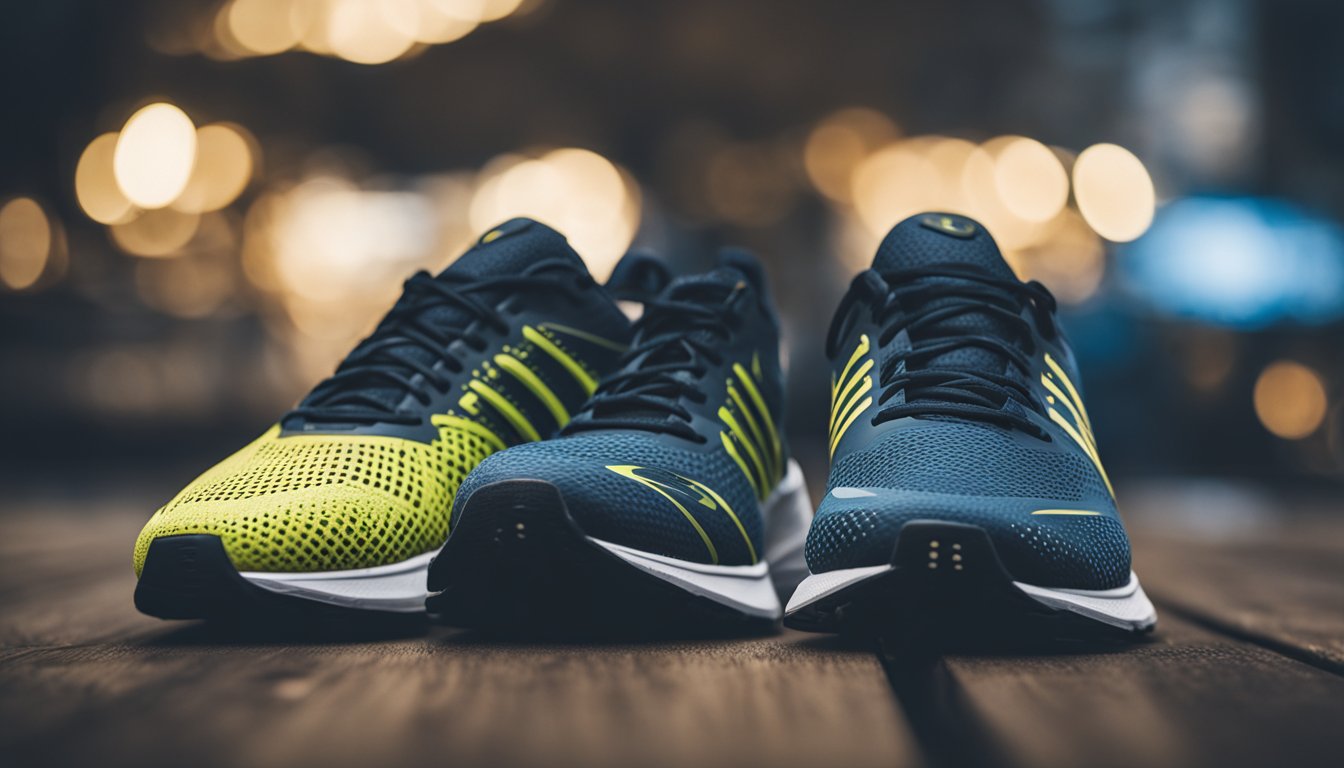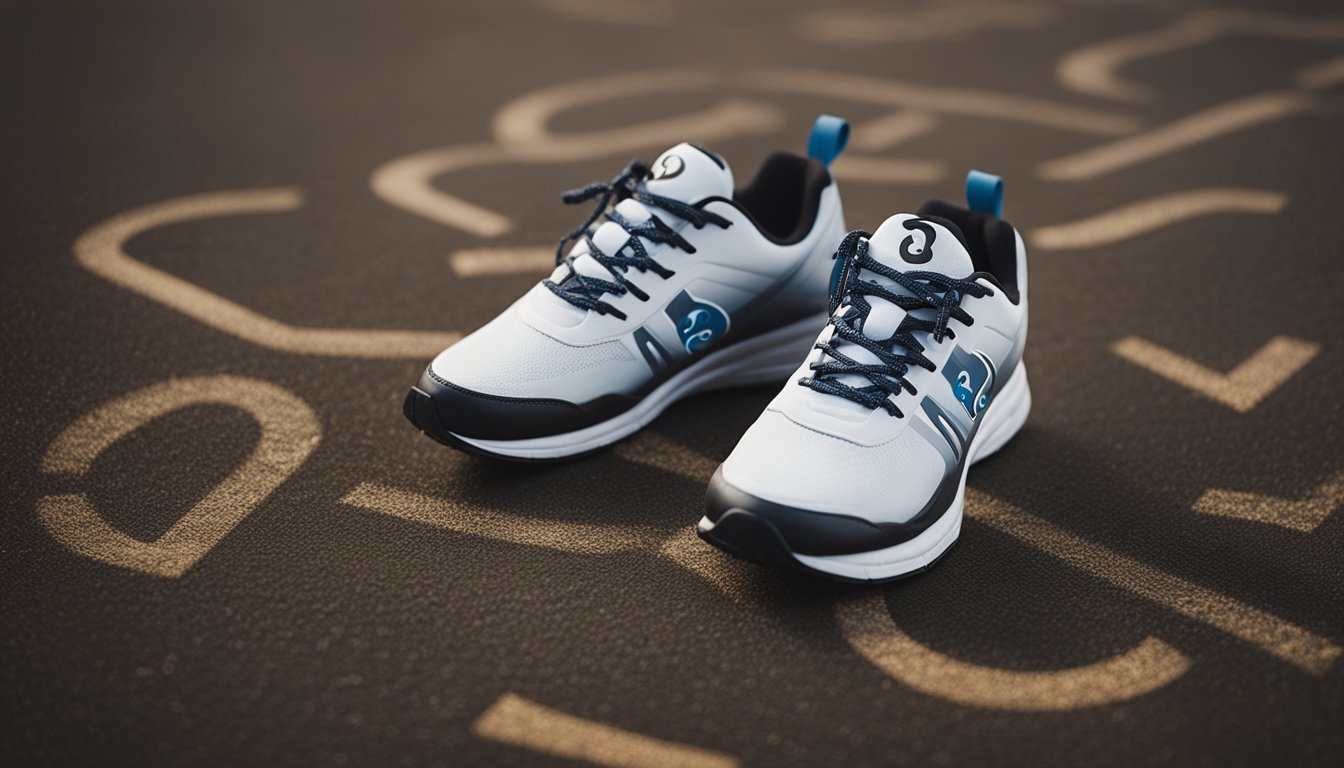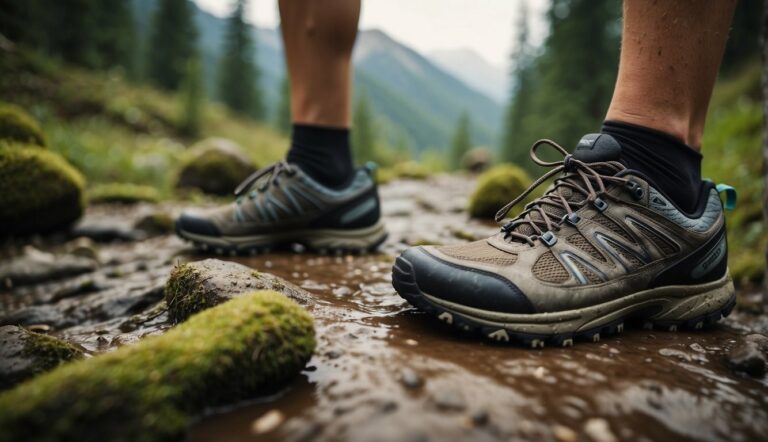Can Women Wear Men’s Running Shoes? (Fundamental Differences)
A woman can wear a man’s running shoes if she finds them comfortable and supportive for her feet. Men’s running shoes are customarily wider, especially in the heel and forefoot areas, and may have a thicker midsole for more cushioning due to the heavier weight they are designed to support. This is a common solution for women runners who have a longer foot length, requiring larger sizes that are often found in men’s styles.
When choosing men’s running shoes, women should focus on getting the right fit, ensuring the heel fits snugly, and there’s enough room in the toe box without excess space. Along with men, women should also take into account the level of support needed for their arch and running style. Remember, men’s styles are designed for both genders to enjoy.
To convert men’s sizes to women’s, subtract 1.5 to 2 sizes from the men’s size. However, it’s crucial to try the shoes on and test them while running to ensure they meet individual comfort and performance needs. With the various styles available for both women’s and men’s running shoes, finding the right pair should be an enjoyable process.
Can Women Wear Men’s Running Shoes? An Overview
When you’re searching for the perfect running shoes, the question of whether a woman can wear men’s running shoes may cross your mind. Here’s a quick overview to help you make an informed decision:
Men’s running shoes generally have a wider design, particularly in the heel and toe areas, which can affect the fit for women who often have narrower feet. Shoe design is critical in ensuring comfort while running, as it impacts support and overall performance.
Differences between Men’s and Women’s Running Shoes:
- Width: Men’s shoes are typically wider.
- Weight: Men’s running shoes are often heavier.
- Cushioning: Men may find more cushioning which can be beneficial for those with foot pain.
- Style: Women’s running shoes are often available in a wider range of brighter colors and designs.
When considering men’s running shoes, focus on:
- Fit: Ensure the heel fits snugly and the toe box gives your toes room without excess space.
- Support: Look for shoes that provide the right support for your arch and running style.
- Comfort: Always go for comfort over style when choosing running shoes.
Remember, the key is how the shoes feel on your feet. If men’s running shoes fit a woman well and support her running needs, they can be a suitable option regardless of gender.
Always try shoes on and go for a brief run, if possible, to gauge their performance and comfort level for you.
Fundamental Differences Between Men and Women’s Running Shoes

When selecting running shoes, you’ll notice particular design differences between men’s and women’s options which are closely tied to the physiology of each gender. These differences impact fit, comfort, and performance during running.
Width
Women’s running shoes are typically designed with a narrower width and a lighter build to match the generally more slender shape of a woman’s foot.
In contrast, men’s running shoes offer a wider toe box and a broader fit overall, catering to the average larger and wider foot of a man.
Here’s a quick comparison:
| Aspect | Women’s Running Shoes | Men’s Running Shoes |
|---|---|---|
| Width | Narrower (B width) | Wider (D width) |
| Weight | Lighter construction | Heavier build |
| Support & Cushioning | Tailored for lighter weight | Enhanced for greater mass |
Heel Shape and Toe Box Size
Moving from the heel to the toe of running shoes, the differences in design play a significant role.
Men’s shoes often have wider heels due to the typically larger heel bones of men, while women’s shoes might feature more heel support to accommodate the shape and mechanics of a woman’s foot.
When examining the toe area, men’s running shoes have a wider toe box, given that men’s toes and forefoot are generally broader.
Physical Differences Between Men and Women’s Feet
When considering running shoes, it’s important to understand how the physical differences between men’s and women’s feet can affect the fit and performance of the shoe.
The right fit can enhance your comfort and running experience.
Foot Shape and Size Considerations
Men’s feet generally tend to be wider and larger compared to women’s feet, which are typically narrower, especially in the heel. When looking for the perfect fit, you should be aware of these variations to ensure comfort and prevent injuries.
Finding a shoe that accommodates the width of the shoe is key as women often have narrower heels and a wider toe box might be needed.
Gender-Specific Features and Their Functions
Shoes are often designed with gender-specific features to address the distinct biomechanics like pronation and the different body weight distribution between men and women.
For instance, women’s shoes may have greater arch support and flexibility to match their typically lighter body weight and different foot strike. When looking for a running shoe, pay close attention to these features:
- Arch support: Especially if you have a high arch or flat feet, finding the right support is non-negotiable.
- Width: Men’s running shoes are generally built with a slightly wider base, which might not support a woman’s foot in the same way, possibly leading to sliding and discomfort.
Remember, the goal is to find a shoe that allows you to run comfortably and supports your foot’s unique shape and size.
How To Convert Men’s Running Shoe Sizes To Women’s
Your unique shoe size, as well as the runner’s foot shape, both greatly contribute to finding a comfortable and fashionable fit in running shoes. You may discover that men’s sizes can align with your personal preference and style, making it an appropriate choice of athletic footwear for many.
Understanding size conversion is the key ingredient to unlocking your ideal fit, whether you’re scouring the sneaker racks for athletic trainers or casual footwear. Keep in mind, however, that shoe sizes can slightly vary based on the brand.
With just a simple size conversion, your options for customization in men’s sneakers and runners become exponentially greater.
Men’s running shoe sizes are typically 1.5 to 2 sizes larger than women’s. To cater to different foot shapes and q-angles – the angle between the quadriceps muscle and the patellar tendon, you subtract 1.5 to 2 sizes from the men’s size to convert to women’s sizes. Conversely, to find your size in men’s shoes, you would add 1.5 to 2 sizes to your standard women’s size.
Here’s a quick shoe size conversion table for converting men’s running shoe sizes to women’s:
| Men’s Size | Women’s Size (add 1.5 – 2 sizes) |
|---|---|
| 6 | 7.5 – 8 |
| 6.5 | 8 – 8.5 |
| 7 | 8.5 – 9 |
| 7.5 | 9 – 9.5 |
| 8 | 9.5 – 10 |
| 8.5 | 10 – 10.5 |
| 9 | 10.5 – 11 |
| 9.5 | 11 – 11.5 |
| 10 | 11.5 – 12 |
Finding the right size is one thing, but it’s also crucial to remember that every foot is different. The width of the shoe can significantly affect its fit. Men’s shoes are generally designed wider, so if you have a wider foot or larger q-angle, a men’s shoe might provide a more comfortable fit.
It’s always wise to try on the shoe to ensure a personalized fit that meets your individual running needs and respects the diversity of adult foot shapes.
Potential Issues With Women Using Men’s Running Shoes
When opting for men’s running shoes, you need to be aware of how the difference in design can affect your comfort and running efficiency.
The potential issues mainly arise from the variations in fit and shoe structure that are tailored to the typical male foot, which may not align with the needs of a female foot.
Blisters and Other Foot Issues
Blisters and foot discomfort can occur if the shoe fit isn’t quite right. Men’s shoes tend to have a wider fit, especially in the heel and forefoot area, potentially causing friction and blisters for women with narrower feet.
It’s important to note that a snug fit is key to minimizing internal shoe movement that leads to irritation.
To preserve foot health, check that the sole of the shoe provides proper shock absorption and the supportive material aligns with the natural shape of your foot. Look for shoes with a secure fit that still offer room for toe movement and breathability to reduce the risk of blisters.
Running Style and Surface
Your running style, whether you pronate or have a neutral gait, and the surface you run on, like a treadmill or trail, significantly influence what type of shoe is best for you.
Men’s running shoes are crafted with a denser cushioning to absorb the generally heavier impact force from a male’s stride.
| Running Surface | Recommended Cushioning |
|---|---|
| Treadmill | Lighter, more flexible |
| Trail | Denser, more protective |
Women who pronate or have specific gait patterns should ensure their shoe offers the suitable cushioning and stability needed. Trail running, for example, may require more robust tread for traction and denser cushioning for uneven surfaces, which men’s shoes may provide.
What About Unisex Running Shoes?

When selecting running shoes, you might consider unisex options which are designed to fit a wide range of feet and come with their own set of advantages.
the Pros and Cons of Unisex Running Shoes
Pros:
- Personal Preference and Style: Unisex shoes often cater to a broader style preference, potentially offering more color options.
- Sizing: They typically follow men’s sizing, which could benefit women with wider feet or men with narrower feet.
- Aesthetics: The design of unisex running shoes usually avoids gender-specific styling, appealing to those seeking a neutral look.
Cons:
- Performance: There may be subtle differences in performance as unisex shoes are not tailored specifically to the anatomical differences of male and female feet.
- Durability: A shoe that is not fitted well to the specific needs of your foot, regardless of gender, might not last as long due to uneven wear and tear.
- Fitness for Purpose: Depending on your foot structure, unisex shoes may not offer the precise support needed for your fitness regime.
In terms of trainers, unisex options can provide a middle ground in sizing differences, allowing for a comfortable fit that does not strictly adhere to traditional male or female shoe models.






